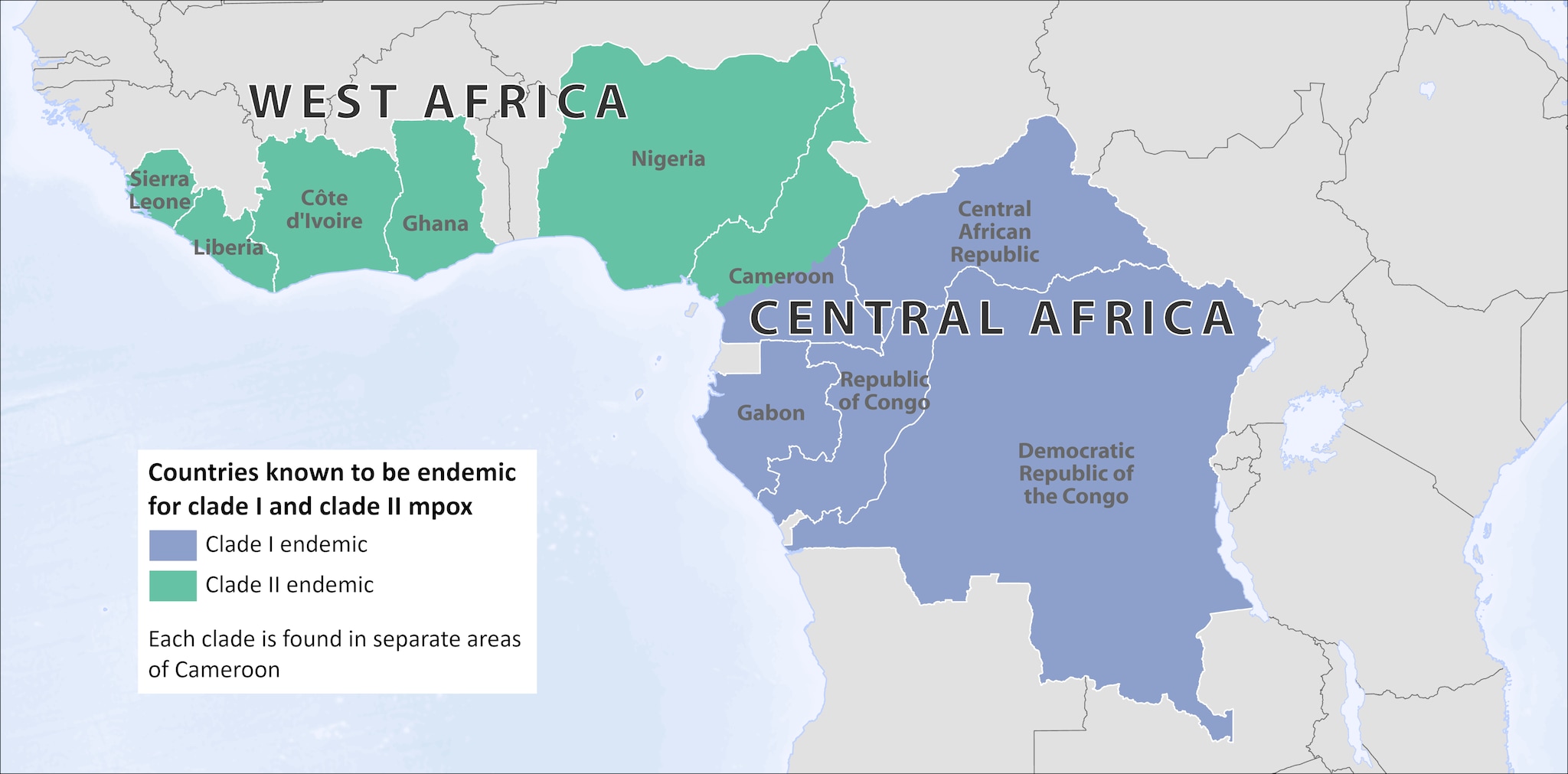About Mpox
Overview
Mpox (formerly known as monkeypox) is a disease caused by infection with a virus, known as Monkeypox virus. This virus is part of the same family as the virus that causes smallpox. People with mpox often get a rash, along with other symptoms. The rash will go through several stages, including scabs, before healing. Mpox is not related to chickenpox.
Mpox is a zoonotic disease, meaning it can be spread between animals and people. It is endemic, or found regularly, in parts of Central and West Africa. The virus that causes mpox has been found in small rodents, monkeys, and other mammals that live in these areas.
Discovery and History
The virus that causes mpox was discovered in 1958, when two outbreaks of a pox-like disease occurred in colonies of monkeys kept for research. Despite being named “monkeypox” originally, the source of the disease remains unknown. Scientists suspect African rodents and non-human primates (like monkeys) might harbor the virus and infect people.
The first human case of mpox was recorded in 1970, in what is now the Democratic Republic of the Congo. In 2022, mpox spread around the world. Before that, cases of mpox in other places were rare and usually linked to travel or to animals being imported from regions where mpox is endemic.
The World Health Organization renamed the disease in 2022 to follow modern guidelines for naming illnesses. Those guidelines recommend that disease names should avoid offending cultural, social, national, regional, professional or ethnic groups and minimize unnecessary negative effects on trade, travel, tourism or animal welfare. The virus that causes it still has its historic name, however.
Virus Types
There are two types of the virus that causes mpox: clade I and clade II.
- Clade I is responsible for the current rise of cases in Central and Eastern Africa. Historically, clade I caused higher numbers of severe illnesses than clade II, with up to 10% of people dying from it. Recent outbreaks have seen much lower death rates of about 1-3.3%.
- Clade II is the type that caused the global outbreak that began in 2022. Infections from clade II mpox are generally less severe. More than 99.9% of people survive. Clade II is endemic to West Africa.
Both types of the virus can spread through:
- Close contact (including intimate contact) with a person with mpox
- Direct contact with contaminated materials
- Direct contact with infected animals
Risk of Severe Disease
Although cases of mpox are not life-threatening, some people may be more likely to get severely ill, including
- People with severely weakened immune systems
- Children younger than 1
- People with a history of eczema
- People who are pregnant
Preventing Mpox
There are several ways you can protect yourself and others from mpox:
- Getting vaccinated. Check with your healthcare provider to find out if the mpox vaccine is recommended for you.
- Avoiding close, skin-to-skin contact with people who have a rash that looks like mpox.
- Avoiding contact with materials that a person with mpox has used, including sharing eating utensils and cups, and handling their bedding or clothing.
- If you do get mpox, isolate at home, and cover lesions and wear a mask if you must be around others.
- If you are in an area of Western or Central Africa where mpox occurs regularly, avoid contact with live or dead wild animals.
